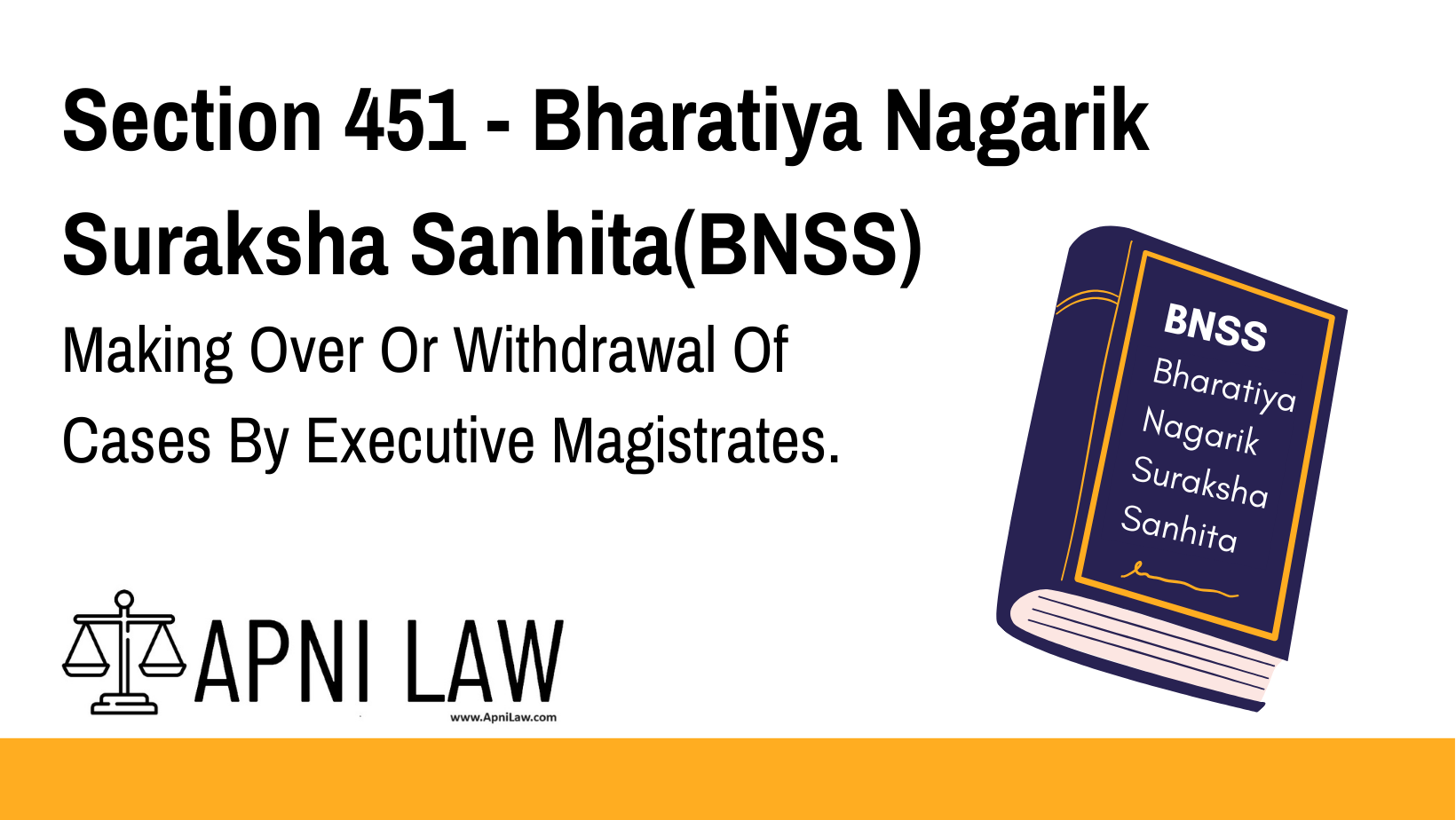Code: Section 451 BNSS
Any District Magistrate or Sub-divisional Magistrate may—
(a) make over, for disposal, any proceeding which has been started before him,
to any Magistrate subordinate to him;
(b) withdraw any case from, or recall any case which he has made over to, any
Magistrate subordinate to him, and dispose of such proceeding himself or refer it for
disposal to any other Magistrate.
Explanation of Section 451 BNSS
1. Purpose of Section 451 BNSS
Section 451 of the Bharatiya Nagarik Suraksha Sanhita (BNSS), 2023 allows Executive Magistrates to reassign or take back cases to ensure fair and efficient disposal of proceedings.
2. Who Has the Power to Transfer Cases?
🔹 District Magistrate (DM) – Can transfer or withdraw cases within their district.
🔹 Sub-Divisional Magistrate (SDM) – Can transfer or withdraw cases within their sub-division.
3. What Can a Magistrate Do Under This Section?
✔️ Make over cases – Transfer a case to a subordinate Magistrate.
✔️ Withdraw cases – Take back a case previously assigned to a subordinate Magistrate.
✔️ Dispose of cases personally – Handle the case instead of assigning it.
✔️ Reassign cases – Refer the case to another Magistrate for final disposal.
4. Why Is This Power Important?
✅ Ensures cases are handled by the most suitable Magistrate.
✅ Prevents bias or conflict of interest.
✅ Helps in managing judicial workload.
✅ Allows cases to be transferred for administrative convenience.
Illustrations of Section 451 BNSS
Example 1: Transfer for Administrative Convenience
A District Magistrate notices that a particular Magistrate’s court is overloaded with cases. To ensure speedy justice, the DM transfers some cases to another subordinate Magistrate for disposal.
Example 2: Withdrawal Due to Bias
A complaint is filed against an individual who is personally known to a Magistrate. The SDM recalls the case and transfers it to another neutral Magistrate to ensure an impartial trial.
Example 3: Reassignment for Fair Trial
A case involving local political figures is being heard by a subordinate Magistrate. To avoid local pressure, the DM withdraws the case and assigns it to a different Magistrate.
Common Questions and Answers on Section 451 BNSS
1. Can any Magistrate transfer or withdraw a case?
❌ No, only a District Magistrate (DM) or Sub-Divisional Magistrate (SDM) can exercise this power.
2. Can an accused request a case transfer under this section?
❌ No, this section only grants power to DMs and SDMs. However, an accused can apply for transfer under Section 448 BNSS or Section 447 BNSS.
3. What happens if a case is wrongly transferred?
If a transfer is found to be procedurally incorrect, the High Court or Sessions Judge may intervene under Section 447 BNSS.
4. Can a DM or SDM refuse to withdraw a case?
✅ Yes, if they believe the original Magistrate is competent, they can decline a withdrawal request.
Conclusion
Section 451 BNSS allows District and Sub-Divisional Magistrates to reassign or withdraw cases for better efficiency, fairness, and justice. This helps manage judicial workload while preventing bias and undue influence.
For expert legal insights, visit ApniLaw today! 🚀








